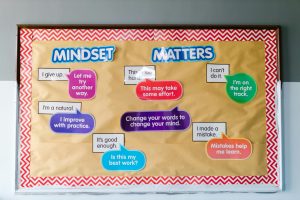The student voice revolution: giving learners a seat at the table
The education system has conventionally been a top-down structure, with teachers and administrators making all the decisions and students expected to simply follow along. However, in recent years, there has been a growing movement towards giving students a voice in decision-making processes. This revolution, known as the “student voice revolution,” is gaining momentum and is changing the dynamic of learning environments. In this article, we explore the significance of this revolution and how it is giving learners a seat at the table.
The Importance of Student Voice
The concept of student voice refers to the involvement of students in shaping their own education through active participation and contribution to decision-making processes. It empowers students to have a say in matters that directly impact their learning experiences, making them more engaged and invested in their education.
Traditionally, students have been seen as passive recipients of knowledge rather than active participants in their own learning. This passive role can lead to disengagement and disinterest, hindering the learning process. However, when students are given a voice and are encouraged to share their thoughts and ideas, they become more invested in their education and take more responsibility for their learning.
The Benefits of Student Voice Revolution
Enhanced Learning Experience
When students are given a voice, they are more engaged and motivated to learn. Instead of following a rigid curriculum, they can work collaboratively with their teachers to shape their learning experiences. This leads to a more personalized and meaningful learning experience, tailor-made to meet their individual needs and interests.
Improved Communication and Problem-Solving Skills
By actively participating in decision-making processes, students learn how to effectively communicate their ideas and opinions. They also develop critical thinking and problem-solving skills as they work with their peers and teachers to find solutions and make decisions that benefit the entire learning community.
Positive Changes in School Culture
Involving students in decision-making empowers them and fosters a sense of ownership and responsibility for their learning. This can lead to positive changes in school culture, creating a more inclusive, collaborative, and supportive learning environment for all students.
Ways to Give Students a Voice
Student-Led Conferences
Instead of traditional parent-teacher conferences, student-led conferences allow students to take the lead in discussing their own progress, goals, and strengths. This gives them a voice in their academic journey and encourages them to take ownership of their learning.
Student Surveys and Feedback
Regularly seeking feedback from students through surveys and other forms of communication allows them to express their thoughts and opinions on their learning experiences. This valuable feedback then informs decision-making processes and helps improve the overall learning environment.
Student Representation in School Governance
A student council or other forms of student representation in school governance can give students a more active role in shaping school policies and decisions. This also allows them to gain valuable leadership skills and understand the complexities of decision-making processes.
In conclusion
The student voice revolution is a significant movement that is changing the landscape of education. Giving students a voice in decision-making processes not only enhances their learning experiences but also helps them develop essential skills for their future. As we continue to strive for a more student-centered education system, it is crucial to keep giving learners a seat at the table and valuing their voices in shaping their own education.










